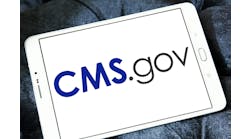Climbing Up the Risk Ladder: How National ACO Has Built a Winning Value-Based Care Infrastructure
A physician-owned and operated accountable care organization (ACO) that got up-and-running in 2013, National ACO—headquartered in Beverly Hills, Calif., but with providers in multiple states—has progressed through the federal ACO ranks in a way that potentially could set the path for others as they prepare for their risk-based journeys.
In January 2013, National ACO, with provider networks in multiple states, including California, Nevada, Tennessee and Pennsylvania, started on its Medicare ACO expedition by entering the MSSP (Medicare Shared Savings Program) Track 1 model. At that time, it was also approved for what was called an advanced payment model, becoming one of just 35 ACOs in the nation that received this opportunity. The 35 ACOs each received up-front funds from the government as a loan to the ACO, so they could begin to operate, and provide an infrastructure and foundation to move forward.
“Our model is to help community-based physicians, providers and suppliers not only survive, but thrive, as U.S. healthcare [continues] to change,” says Alex Foxman, M.D., National ACO president and chief medical officer. “We are not localized to one area; we look for aligned performing providers all over the nation, and we see if we can move them from volume to value,” he adds.
In 2013, National ACO started with a small number of providers, having just 21 Tax ID numbers and 5,600 attributed lives, but by 2016, that grew to approximately 130 participating providers and about 11,000 attributed lives. In that span, says Foxman, the organization achieved savings for Medicare in three separate years, and in two of those years, it achieved shared savings of more than 4 percent, which equals approximately $3 million each year back to National ACO.
In 2017, National ACO moved into the Next Generation ACO model, which involves two-sided risk. Foxman, which notes that there are only a few community-based physician-owned and operated ACOs in the Next Gen program, says that when National ACO first began in this model, it had 21,000 attributed lives, and now has approximately 31,000.
“We were attracted to the Next Gen model because we clearly saw there were flaws at that time in the MSSP,” he says. Explaining further, Foxman believes that one flaw in the MSSP was that attribution was provided on a quarterly basis, so if the ACO had a panel of beneficiaries that it was managing aggressively, suddenly in the next quarter these beneficiaries could leave with new ones coming in. “It became challenging for us to manage a population in the MSSP. That turnover [rate] was as high as 10 percent every quarter,” he says.
Alex Foxman, M.D.
What’s more, Foxman continues, when the ACO did achieve savings, per the MSSP rules, it had to perform against itself in the following year to beat that those savings—rather than perform against other ACOs. “So we were constantly fighting against ourselves when we were being successful,” he says.
And yet another challenge with the MSSP was the benchmarking methodology was not on a regional level, but on a much broader level. Foxman notes that “The cost of healthcare and healthcare are really different in different regions, and our goal was to expand our organization nationally, so that became a real challenge as well.”
All put together, National ACO leaders were attracted to the innovation in the Next Gen model since they saw that this was the next iteration and the next step to take risk. “All of healthcare is moving to risk-based programs, similar to Medicare Advantage programs. The enhancements provided within the Next Gen program, including reimbursable telehealth waivers, three-day skilled nursing facility (SNF) waivers, and additional services for mobile visits, became attractive to us,” he says.
Building a Successful ACO
Foxman says that different programs were built into the ACO to help its providers manage the patients as well to try to help prevent unnecessary hospitalizations, nursing home utilization, and ER visits. One example of this is via a mobile medical practice called Mobile Physician Associates, which Foxman helped create, and helps serve the needs of the home bound, frail elderly and disabled populations of Southern California. Another offering is an app that Foxman developed called PriveMD, which he says is analogous to an Uber for doctors, in that it works to deploy providers to a patient’s home or community setting quickly to decrease the chances he or she goes to a hospital or nursing home.
What’s more, National ACO is also implementing programs to help manage its high-risk patients, and is embracing analytics by utilizing the power of all the claims data it is receiving from CMS (the Centers for Medicare & Medicaid Services). It’s now able to integrate with ADT (admission, discharge, transfer) feeds, as well as with all of the various EHRs (electronic health records) in its physician population. “We are able to get the most information we can to identify an understand our population, and to hyper-manage those patients who make up the bulk of our costs and have the highest risk,” Foxman says.
To this end, National ACO has also partnered with The Garage, an Orlando-based population health management technology company, utilizing its SaaS-based population health management platform, Bridge, to streamline data collection and reporting across physician practice locations in the different states.
Foxman, who attests that “data is king or queen in our program,” admits that this is the fourth analytics platform the organization has used. In 2013, when National ACO first started out, the value-based platforms that were available did not fit the ACO’s needs, as they were more for capitated and HMO-type environments, he explains. After that didn’t work out, the ACO’s executives linked up with a third party to build its own analytics platform. “That worked out OK for the MSSP, but as we moved into models where we had to integrate data from labs, from HIEs (health information exchanges), from ADT feeds, and from electronic health companies, having everything available in one platform—including patient health records, referral managers, secure messaging, and telehealth—was critical. So we then went out and performed an RFP in 2017, narrowed it down, and chose The Garage.”
Indeed, the platform arms National ACO with comprehensive population health management solutions, including tools and resources for care coordination and connectivity, member engagement, care management, and more. The cloud-based platform also leverages innovative technology, such as artificial intelligence, telemedicine and predictive modeling, officials noted.
For others that are in a physician-owned and operated community-based model, Foxman stresses the need to look carefully at one’s provider population—particularly that the people being brought in are aligned and they will comply with the program. In these types of programs, he explains, once providers are in, and their attributed beneficiaries are in, they are in for the whole year. “You have to make sure that it’s something you vet ahead of time,” Foxman advises.
At the same time, there is no reason to start “big,” he says, noting that CMS has programs where even individual doctors will be able to take the plunge into risk, including its Direct Provider Contracting model that is currently being considered, in which physicians can be in risk-based agreements with CMS for their patient population.
Thoughts on Controversial ACO Policy
Across the ACO landscape these days exists much controversy around a recent CMS proposed rule that shortens the time ACOs can spend in one-sided risk models while limiting their shared savings. The idea, per the proposal, is to push ACOs into two-sided risk models as the government believes upside-only risk programs cost Medicare money and are not effective.
While different stakeholders have varying viewpoints on this proposal, Foxman has a strong take on the matter, and believes that “accountability is very important in the healthcare system.” He says, “If you are running a program where there is no downside risk and little responsibility for reigning in the costs, it won’t be a very successful program across the board. By bringing in that ‘skin in the game’ concept into healthcare, we will help greatly and quickly accelerate the alignment we need for all of us to succeed. Until a provider takes out his or her wallet and has to virtually pay for the services that are being provided either inside or outside the office, he or she will not feel that concern financially that will help us reign in costs.”
What’s more, regarding the likelihood that some ACOs that will certainly leave the MSSP program if this rule gets finalized, Foxman notes that “There will always be bail threats, but the reality is Medicare is the largest health insurer in the world, and providers will only have certain options moving forward.” He adds, “We know that volume-based care doesn’t work because there is no alignment among the different components of healthcare for us to manage the patient in a population-based environment.”
Foxman attests that if hospitals continue to fill the beds, if nursing homes continue to keep their bed days high, if home health agencies continue to recertify patients, and if physicians continue to see more and more patients in their offices despite reimbursement going down, “we are circling the drain in failure moving forward.”
He adds that “significant and powerful action” is needed to preserve the healthcare system moving forward. And the industry has seen that in other risk-based environments—such as Medicare Advantage, IPAs (independent practice associations) and HMOs that are taking on risk—this works. “The initial fear of taking on risk is a very visceral response and that’s understandable; it will take some time for everyone to move forward and be successful,” he says. “But if CMS provides us with support, that sting may not be as strong as it is now when you’re taking on risk.”



